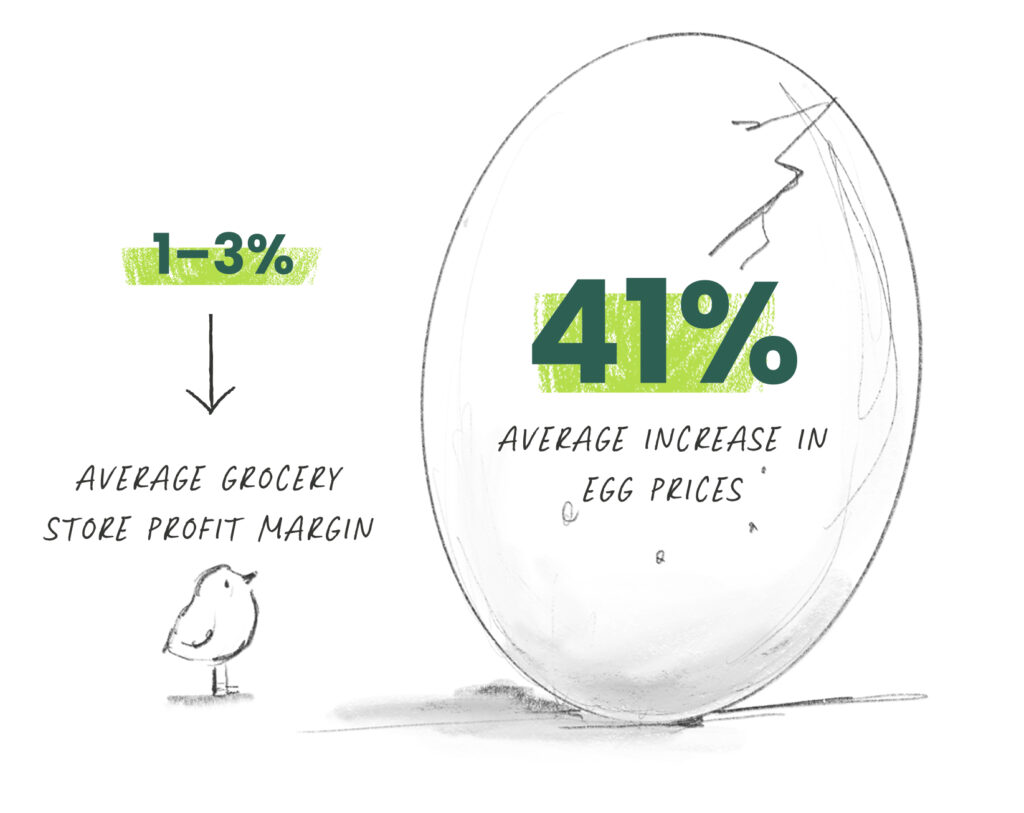Grocery retailers are no stranger to volatility, but today’s economic headwinds are particularly unforgiving. Inflation, recessionary fears, and global trade instability are converging in ways that are amplifying operational risks and putting strain on profitability. Tariffs and trade barriers are not only driving up the cost of goods but also introducing unpredictability into sourcing and logistics, leaving many grocers scrambling to maintain margins and meet shifting consumer expectations.

Making matters more difficult, grocery stores operate on razor-thin profit margins, typically 1–3%. This narrow cushion makes it extremely difficult to absorb disruptions in the supply chain or surging costs without passing increases to consumers. As global instability grows, grocers face rising operational costs, changes in consumer buying behavior, and persistent supply-chain variables that demand fast adaptation and smarter long-term strategies.
That’s why Taper provides grocery retailers with immediate cost-saving actions and long-term decarbonization strategies to weather these uncertainties. By combining practical energy-management tools with supply-chain and waste-management expertise, this collaboration offers grocers a road map to reduce costs, strengthen operations, and build deeper connections with the communities being served.
The Challenge: Rising Costs, Tariffs, and Trade Barriers
The combination of inflation, supply constraints, and global conflict is accelerating food cost increases across the United States. According to the USDA, egg prices are expected to rise 41% in 2025, largely driven by the avian flu outbreak, which has decimated poultry flocks and disrupted supply chains. Meanwhile, U.S. beef cattle inventory is at its lowest level in 73 years, pushing prices even higher and reducing availability across grocery shelves.
Trade conflicts and new tariffs are directly impacting the availability and cost of imported food products and agricultural goods. U.S. tariffs on Chinese and South American imports have triggered retaliation, resulting in canceled agricultural orders and constrained access to goods like soy, pork, and citrus [New York Times, April 2025]. These disruptions are especially problematic for grocery retailers dependent on imported produce, seafood, and specialty items.
The Opportunity: Energy & Supply Chain Management
Grocery retailers are uniquely positioned to regain control by focusing on three key levers: energy efficiency, supply-chain diversification, and consumer engagement.

Tip #1 – Operational Efficiency Through Strategic Energy Management
Grocery stores are energy intensive—refrigeration, lighting, and HVAC alone account for more than 60% of a typical store’s energy use. But that also means there’s significant opportunity to reduce costs and carbon.
- Upgrade to high-efficiency refrigeration systems and LED lighting.
- Maintain and tune up HVAC systems regularly.
- Install controls and sensors for lighting and refrigeration.
- Reduce food waste through temperature monitoring and analytics.

Tip #2 – Strengthening Supply Chain Resilience
Local sourcing not only supports community economies but also reduces supply-chain emissions. Products from local vendors travel an average of 27 times fewer miles than conventionally distributed goods.
- Diversify sourcing to reduce dependance on tariff-prone regions.
- Strengthen relations with local farms and producers.
- Use real-time inventory and sourcing platforms to respond to demand shifts and delays.
- Invest in supplier mapping and risk assessments.

Tip #3 – Deepening Consumer Loyalty Through Local Engagement
Building strong relationships with consumers through local initiatives and transparent communication about sourcing and pricing are key strategies to deepen loyalty. Consumers are paying closer attention to where their food comes from, and they’re eager to support brands that reflect their values. Retailers can lean into this momentum by
- launching “buy local” promotions and highlighting regional products;
- reinforcing price transparency and savings initiatives on staples; and
- engaging with the community through food donations, sustainability initiatives, and farm-to-store storytelling.
These tactics not only build loyalty but also reinforce a grocer’s purpose, which is critical during times of economic stress.
Action Steps: What You Can Do Now
Quick Wins:
- Audit your top 10 imported SKUs—can they be locally sourced?
- Shift marketing to emphasize value, community, and local freshness.
Long-Term Strategies:
- Invest in circular economy models like food waste reduction programs, composting, and sustainable packaging.
- Build stronger local supplier contracts to reduce reliance on global markets.
- Transition to low-emission operations to improve performance and align with new decarbonization reporting expectations.
Yes, inflation, tariffs, and trade instability are real threats. But they also open the door to rethinking how grocery operations can run leaner, smarter, more localized, and more connected to the community.
By investing in operational efficiency and supply-chain agility today, grocery retailers can not only weather the storm but also come out of it stronger, more profitable, and more aligned with the customers they serve.
Taper is here to support grocery operators with practical, scalable solutions to survive today’s challenges—and thrive well beyond them. Chat with one of us today.
